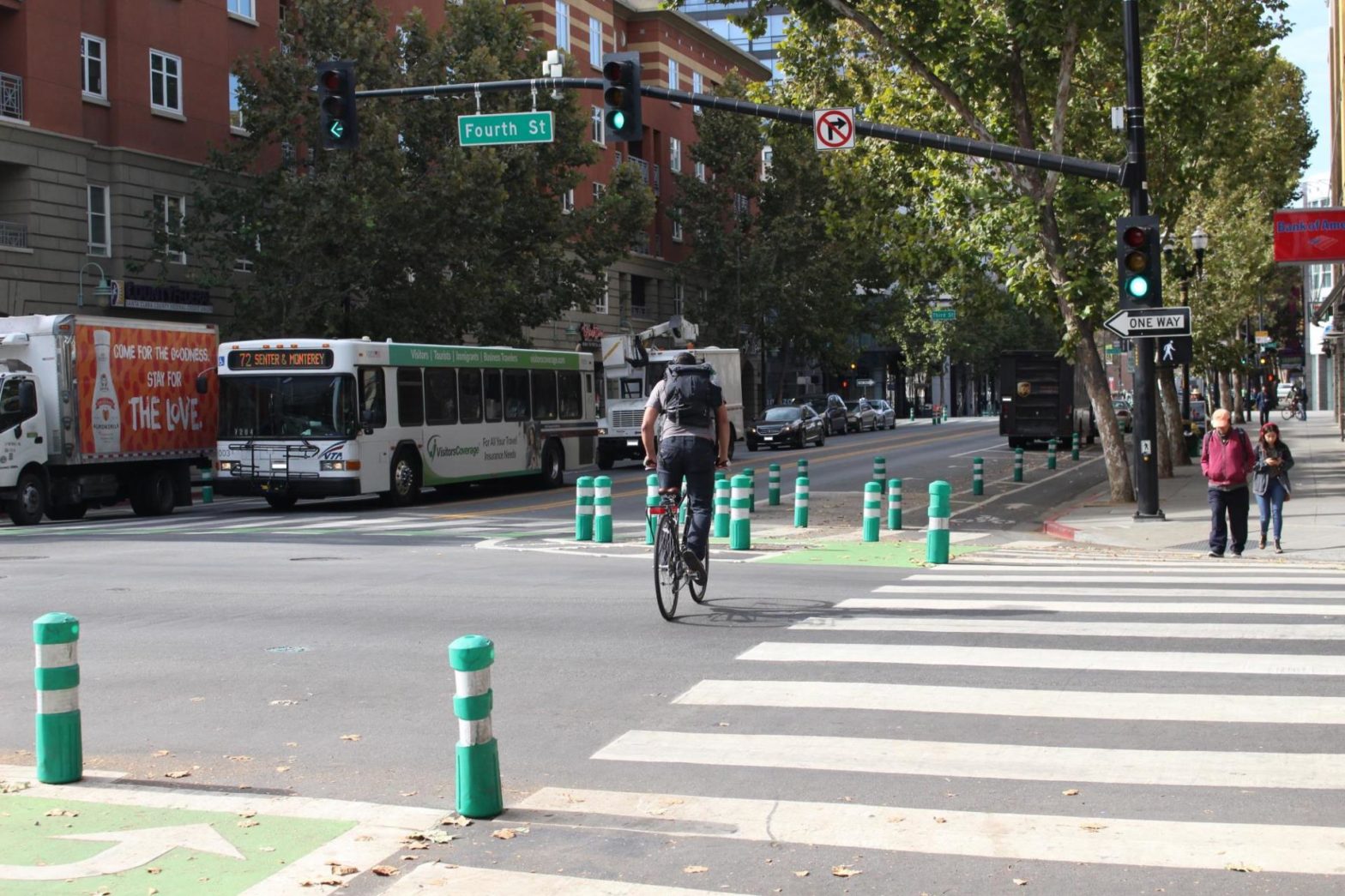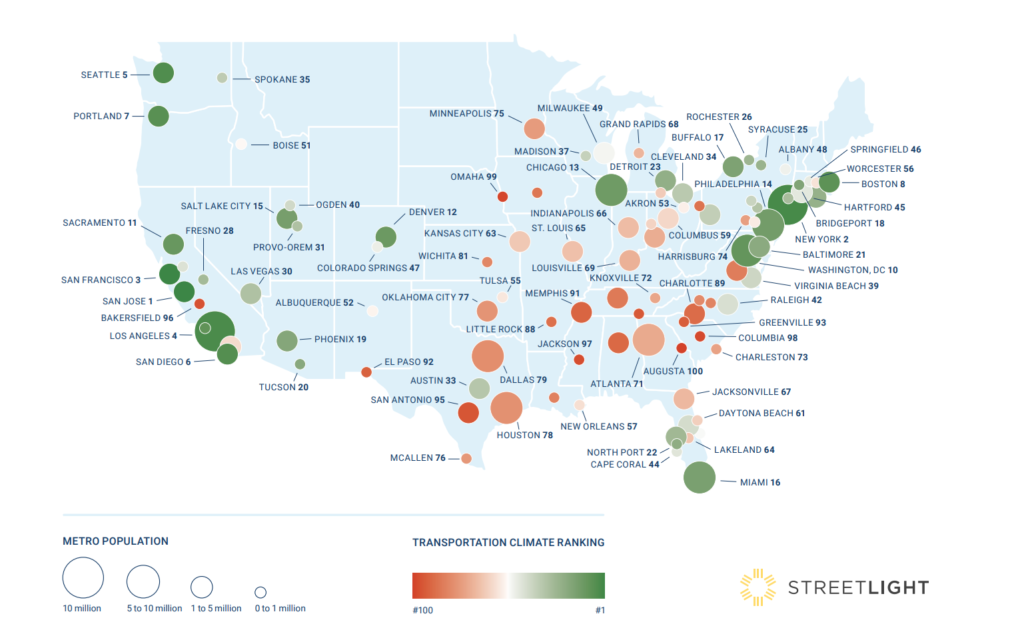
Photo: city of san jose
San Jose tops ranking of US cities for low-emission transport
21 March 2024
by Christopher Carey
San Jose has been ranked as the top US city for low-carbon transport, according to a study from mobility analytics firm Streetlight Data.
The 2024 US Transportation Climate Impact Index ranked the 100 most populous metro areas in the US based on eight key factors impacting greenhouse gas (GHG) emissions – vehicle miles travelled (VMT); fuel economy; public transit ridership; EV penetration; biking activity; pedestrian activity; trucks miles travelled; and change in VMT.
While San Jose achieved the highest scores across four areas–vehicle miles travelled, EV penetration, fuel economy and truck mileage–the city’s public transit provision score was considerably lower, ranking 24th.
“We are proud to be listed as the most carbon-friendly US city for transportation, but know we still have much work to do,” a City of San Jose spokesperson told Cities Today.
“Though EV and other emerging mobility adoption is one of the city’s priorities as we work to reach net-zero carbon emissions, it is not in lieu of other efforts to reduce driving and increase walking, biking, and transit use.
“In 2022, we adopted a Transit-First Policy, which directs us to prioritise the needs of transit riders when limited right of way or other resources create conflicting demands.
“The policy is pushing us to be more aggressive in planning for and building transit infrastructure, even when it requires reduced automobile travel or parking capacity.
“A recent example is our implementation of transit signal priority along one of our most travelled streets, Monterey Road, which has significantly increased on-time performance of the buses on that corridor and we are looking to expand its use to other bus routes in the city.”
The spokesperson added that while the city implements some policies around public transport, services are operated at the county level by the Santa Clara Valley Transportation Authority (VTA).
Rankings
The New York City region was ranked number two overall, and number one in terms of public transit and biking provision.
San Francisco was ranked third overall, followed by Los Angeles and Seattle.

At the other end of the index the Augusta-Richmond county metro area, which spans parts of South Carolina and Georgia, ranked worst for overall climate impact, followed by the the metro regions of Omaha, Nebraska; Columbia, South Carolina; Jackson, Mississippi and Bakersfield, California.
“In 2023 we saw many of the pandemic-related reductions in transportation emissions return to pre-pandemic levels,” said Laura Schewel, CEO, StreetLight Data.
“Now is the time to take a close look at transportation climate impact locally – across the US, the composition of a community’s emissions varies a lot.”
Image: City of San Jose











